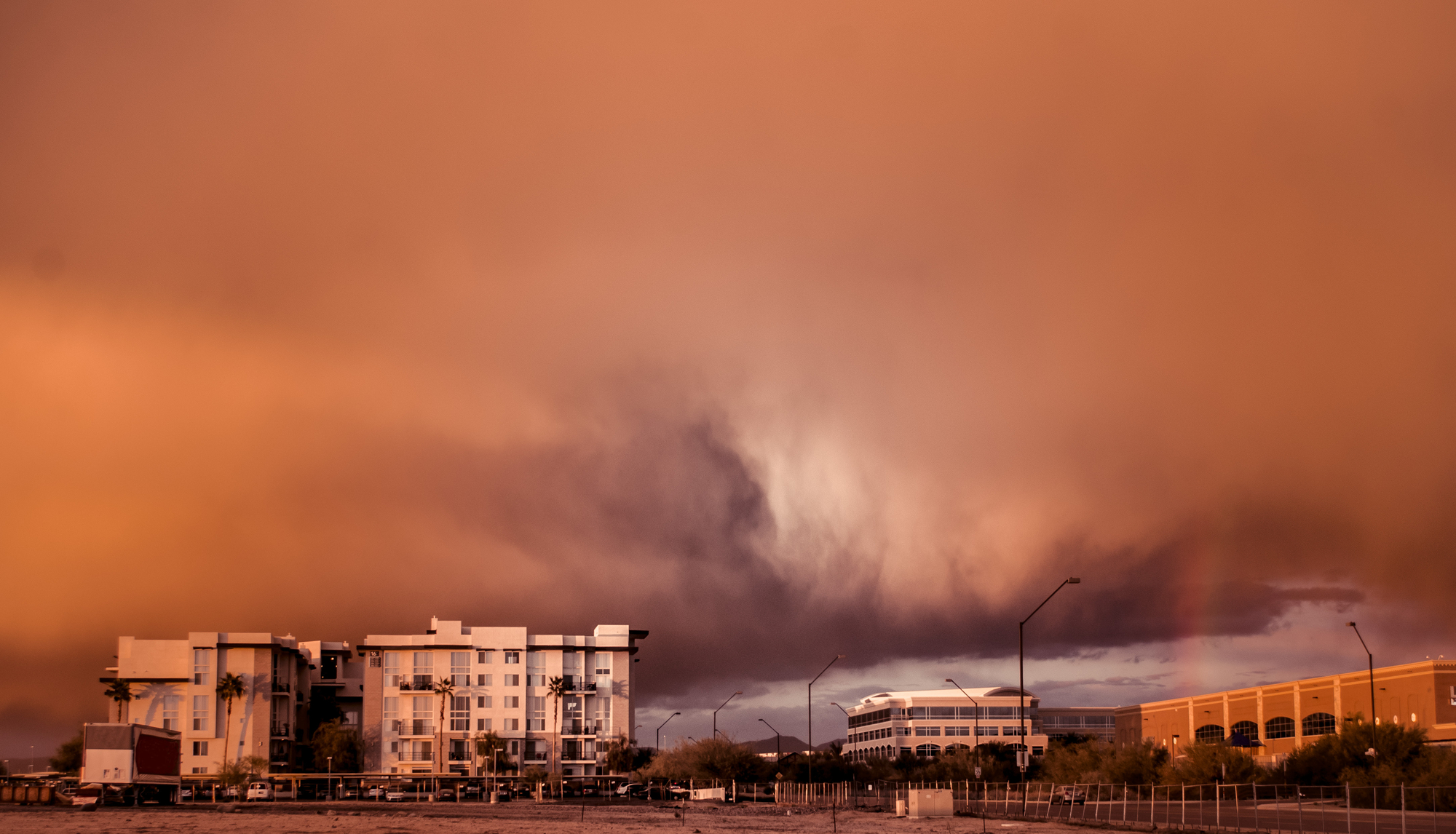A haboob or dust storm will typically hit suddenly without warning. They are an impressive but scary sight, advancing in a massive wall of dust and debris that can be miles long and thousands of feet high. While Haboobs can happen anywhere in the United States, they are regular occurrences during the summer monsoon season in Phoenix and parts of Central Arizona.
What Causes a Haboob?
Dust storms or haboobs result from the outflow winds of thunderstorms, striking with little warning, and creating dangerous driving conditions. The blinding wall of dust reduces visibility instantly, triggering accidents that often involve chain collisions and massive pileups. While haboobs typically only last a few minutes, your actions as a motorist during the storm can save your life and the lives of others.
Be Informed
During dust storm season, keep up with the weather conditions (TV, NOAA Weather Radio, etc.), and stay off the roads if one is anticipated. Warnings are usually issued when visibility is 1/2 mile or less because of blowing sand and dust, and wind speeds hit 30 mph or more. Even if you’re fortunate enough to hear warnings of a haboob, it’s important to know what to do if you’re on the road when it hits.
Don’t Drive
The best thing to do if you’re stuck in a dust storm is NOT to drive! This is especially the case if you’re operating a high-profile vehicle. Besides keeping off the road during a Haboob, adhere to the following tips:
- Check Surrounding Traffic: If you end up facing a dust storm, check the surrounding traffic and start slowing down.
- Pull-Over ASAP: Pull over as soon as possible – don’t wait until visibility is poor, making it impossible to pull safely off the road. If you can, exit the highway. Look for a safe place to exit the paved portion road completely, and don’t stop in the emergency or travel lane. Remain in the vehicle, seatbelts fastened, until the Haboob passes.
- Turn off The Lights: Once you’ve pulled over, turn off the lights, and emergency flashers, and take your foot off the brake pedal, so the taillights aren’t illuminated. Vehicles coming from the rear and using the advanced car’s lights as a guide have accidentally left the roadway and, in some situations, collided with parked vehicles.
- Intermittently Honk Your Horn: The dense cloud of dust created by a haboob can prevent other motorists from seeing your vehicle, so honking the horn occasionally will help warn them of your location.
After the Haboob
After a haboob has passed, be careful entering the road again because pavement markings (like lane indicators) might not be visible. Also, rain often accompanies dust storms causing slippery driving conditions.
Have Your Car Checked Out
Dust storms can damage your vehicle, including body paint, calipers, sensors, brake pads, and air filters. During the monsoon season, you should regularly get your car checked out to make sure these Arizona dust storms don’t cause unnecessary damage. Contact us today.






